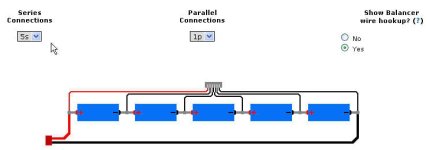liveforphysics
100 TW
Every LiPo battery I've ever seen has something on the back that says "never exceed 1c charge rate".
I've charged some small helicopter 2Ah 30C packs at 10Amps for lots and lots of cycles, and the batteries still perform fine. That's 5C charging, but again, this is a very low Ri cell, and the charger automatically reduces current if it see's any cell voltages climb about 4.2v. That's the crucial part, otherwise you end up with a LiPo fire.
Now, more importantly, I want to know what charger you have that can put out more than 2-3C on an E-bike sized pack. I have to run my chargers of 2 dedicated circuit breakers because they draw 2,500w. E-bike sized packs, getting the energy we need into our packs faster than about 20-30mins (AKA, 2-3C) is going to require 220v chargers on dedicated breakers to be practical.
I've charged some small helicopter 2Ah 30C packs at 10Amps for lots and lots of cycles, and the batteries still perform fine. That's 5C charging, but again, this is a very low Ri cell, and the charger automatically reduces current if it see's any cell voltages climb about 4.2v. That's the crucial part, otherwise you end up with a LiPo fire.
Now, more importantly, I want to know what charger you have that can put out more than 2-3C on an E-bike sized pack. I have to run my chargers of 2 dedicated circuit breakers because they draw 2,500w. E-bike sized packs, getting the energy we need into our packs faster than about 20-30mins (AKA, 2-3C) is going to require 220v chargers on dedicated breakers to be practical.








